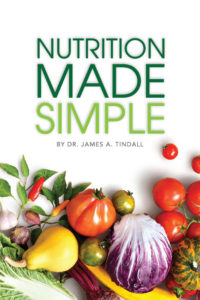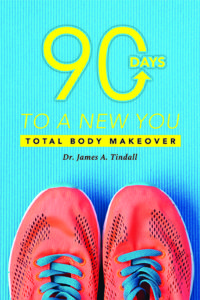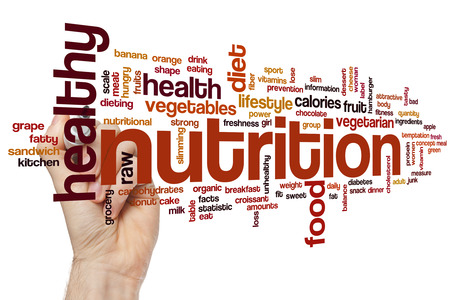How long has it been since you have exercised? Do you need to lose 20, 40, or more pounds? Let me help you because there is more to life than constantly having weight loss on your mind and I have higher knowledge goals for you to think about later. After all, it’s difficult to talk to people about important issues when his or her mind is constantly focused on a nagging personal problem, i.e., weight loss.
If you want to lose lots of weight, let’s get started. Think of this as a beginner guide that compliments other articles on this site.
The first thing I want you not to do is get on a diet that specifies everything you should put in your mouth until you have achieved your weight loss goal. Such a diet will just make your life more miserable and stressed. It’s like being on a diet I put my professional bodybuilders on before a competition. I call it a cardboard diet, because very few people can actually stay on one long enough to achieve his or her goals, competition or not. It’s also why you don’t see millions of bodybuilding people that are IFBB pros.
Advertisement: Amazon (click on photo for more info)

Instead, let me show you a different approach. Before, I’ve talked about having a positive attitude, starting slowly and being persistent. Let’s use that approach for a basic one-month guide to shed some pounds.
First, I want you to walk every day – that’s your beginning exercise. Initially, attempt to walk one mile in 25 minutes. Each day, I want you to reduce your time by 3%. That’s right, 3%; thus, on day 1 your walk is 25 minutes; day 2 the time is 24 ¼ minutes; day 3 walk time is 23 ½ minutes and so on. It doesn’t sound like much, but it’s slow and persistent. I want you to keep reducing your time until you are down to 15 minutes (about day 20).
Before you reach your goal and are down to walking 18 minutes – day 12-13, you will add some basic body-weight exercises (no equipment, no gym), not more than 3 exercises for 3 sets each of 6-10 reps depending on your fitness status or capacity. These can include simple in-place squats (folding your arms across your chest and squatting down then, up); sit ups of any kind; pushups; lunge walks, and so forth. You choose some that you like to do. Remember, the goal is not to kill yourself, but to be steady and persistent in your goal. Thus, this keeps the exercises simple and easy. Best of all, you don’t need to do them before work or after, you can find a walking path during work, lunch time works for many, and do a walking lunch. Skip the restaurant and make a nice sandwich or salad and consume about 35 minutes before or after your walk.
Second, let’s move into the nutritional part of your program. Again, let’s not make major changes or overhauls to your diet, but simple changes. Reading our ‘keys to weight loss’ in the health section is a good place to begin and, learn what a portion size is. Then, stick to the correct portion size for you. For example, a portion size of meat is the size of a deck of playing cards or average palm size (3-4 ounces) not, 8, 10, 12, or more. Apply portion size to all your meals. Also, you would have a similar makeup for each meal of ‘perfect’ proportions. Examples follow – each should be about same proportions for each meal.
Proteins Portion of Plate: consume about 2 portions of protein of some sort such as chicken, turkey, eggs, tofu, beef, fish – eat the food you like. Breakfast will jump start your metabolism, which is why is it your most important meal. By not overeating the body will remain satisfied, burn fat, and build muscle. Best of all, while your body is digesting food it burns more calories. It’s energy in (food) minus energy out (exercise).
Carbohydrates – whole grains (about ¼ to ½ cup) that include brown or wild rice, oats, legumes, sweet potatoes, and others. These are very filling, i.e., they make you feel fuller and are high in fiber that helps you stay more regular. More importantly, they digest slowly, which helps you avoid the sugar spike and keep your fat-burning metabolism up.
Carbohydrates – veggies: 1-2 cups (a cup is equivalent to an average fist size – approximately) of any vegetables of your choice although, I’d stay away from high glycemic index (higher sugar content) veggies initially such as carrots or, do not use too many of them. Some good ones are mustard greens, kale, collards, asparagus, eggplant, and many others.
Fats: 1-2 teaspoons (1-2 thumb size portions) of butter, oils, avocado, nuts, etc.
These should be in each meal, mixed to your taste, not someone else’s.
So, now that you know enough about what should be on your plate, let’s being a week at a time revamping each of your meals.
Week 1 – concentration is on your breakfast. What food do you like? Perhaps eggs thus, an omelet made from 3-4 eggs with onions, peppers, or herbs cooked to taste and combined with a 4-ounce glass of juice or small banana. There are all kinds of meats to choose from also. You could use 1-2 eggs and cut up a couple of small links of turkey sausage, tofu, or even veggies in your omelet. The variations are endless. This is mostly protein so we call it a ‘fat burner’ breakfast. Try a variety of combinations that work well for you. Mix a meat portion with a small bowl of granola, etc. However, to be successful, plan things out on Sunday so that you are prepared for the week. I’m a very busy person so generally, I cook my breakfasts for the whole week and put each day in a small container, seasoning it from fresh herbs and veggies from my garden. Then, simply pop in the microwave and presto, instant breakfast in about 5 minutes.
Week 2 – let’s concentrate on lunch. Remember, little steps. Keep working on modifying your breakfasts so they are nutritious and now, let’s look at lunch. Lunch becomes a real issue for many working people due to workplace schedules and so forth. But, like breakfast, you can prepare ahead of time. A friend of mine eats the same thing every day – a whole wheat bread sandwich with humus and alfalfa sprouts. Sometimes he’ll add a bag of chips and cup of tea. He exercises playing hockey and is in good health, but very skinny. Thus, you need to ensure you have adequate calories. Depending on body size, you should have a 400-600 calorie lunch. What would it consist of? Perhaps a grilled chicken breast, raw vegetables (about 2 cups – lettuce, spinach, cucumbers and celery, etc.) and add some fat. The fat can be in the form of dressing or even nuts sprinkled atop the salad. Like breakfast, there are so many variations. See 90-days to a New You, which has 4 weeks of menus and exercises to help you get started.
Advertisement: Amazon (click on photo for more info)

Week 3: it’s dinner time, but keep working on your breakfast and lunches. Now, it’s time to revamp your dinners. Remember your portions of proteins, carbohydrates and fat and create any combination that basically meets the ‘perfect plate’ and you’re well on your way to a healthy nutritional lifestyle. Remember the old meat and potatoes diets that were prevalent for so long. These were lacking in balanced nutrition. But, they’re easy to change by having a portion of meat such as fish or lean pork, 2 cups of salad or vegetables, the rawer the better; sprinkle on some nuts and add some tasty dressing and you have a simple, yet nutritious dinner. Soups are also a good addition, but you can make them hearty such as chicken noodle soup with vegetables such as onions, carrots, celery, kale, cabbage or any mixture. Make the evening before and put in a crock pot before you head out for the day. Set it for low at 8-10 hours and you have a ready meal when you come home, adding some whole-grain bread and butter to the mix. Use your imagination.
Week 4: snacks – in the morning about 2 hours after breakfast; afternoon about 1 ½ hours after lunch; and evening, about 1 hour before bed. Consume about ¼ to ½ cup (1-2 handfuls) of complex carbs or proteins such as nuts – approximately 200-400 calories – if you’re 110 lbs it’s the lower end and if you’re 200+ pounds it’s the higher end of this range. For the before bedtime snack have a small banana, half an apple or similar. Your body will not completely digest this snack. But, when you begin to come out of cycle 2 going into cycle 3 of your deep rem sleep (about 2-3 am in the morning), your body will be looking for food as it were. There will then be that partially digested snack that it can finish digesting and slowly increase your metabolism.
Advertisement: Don Tolman International (click on photo for more info)

It takes about 3 weeks to create a good habit and that’s what I’m asking you to do by following these simple guidelines. Do not make quick, drastic changes – start slow and stay steady. I want you to get past the point of wanting to lose lots of weight so we can concentrate on other knowledge that may very well save your life.
To summarize you have two steps to pursue: (1) begin to slowly exercise and (2) gradually change your nutrition for all your meals, one week at a time focusing each week on a different meal – breakfast, lunch dinner. Watch your portion sizes, but make healthy eating choices. If you must eat out at a fast-food burger joint, opt for grilled chicken, a salad and water, not a hot and sloppy with fries and a coke. Finally, and most importantly, for the first two weeks of this program you are allowed no sugar of any kind – this includes alcohol.
Following the simple guidelines above, you will lose at least 10-12 pounds or more in 4 weeks. I’ve had clients lose more than 30. Until next time, when we will discuss cleaning out your kitchen and making it nutrition haven.







